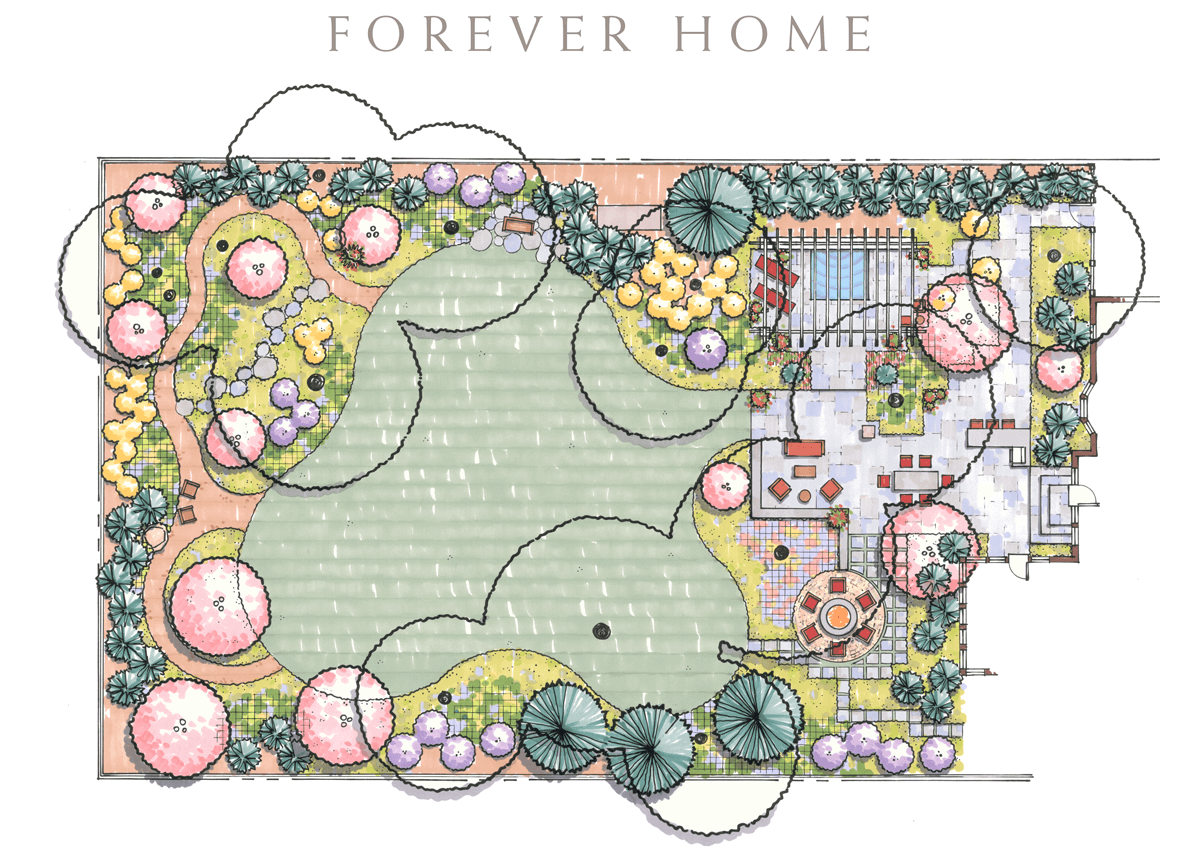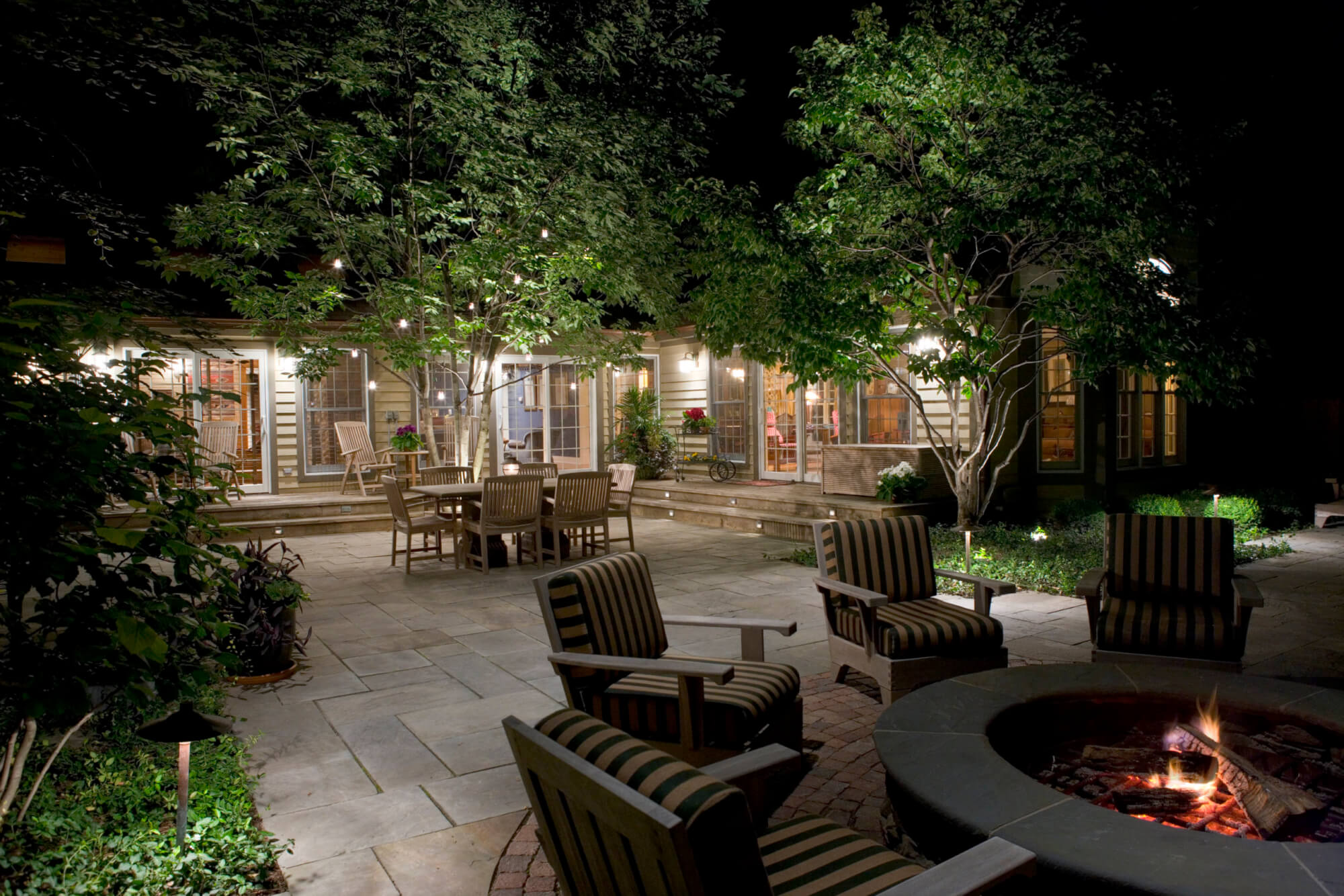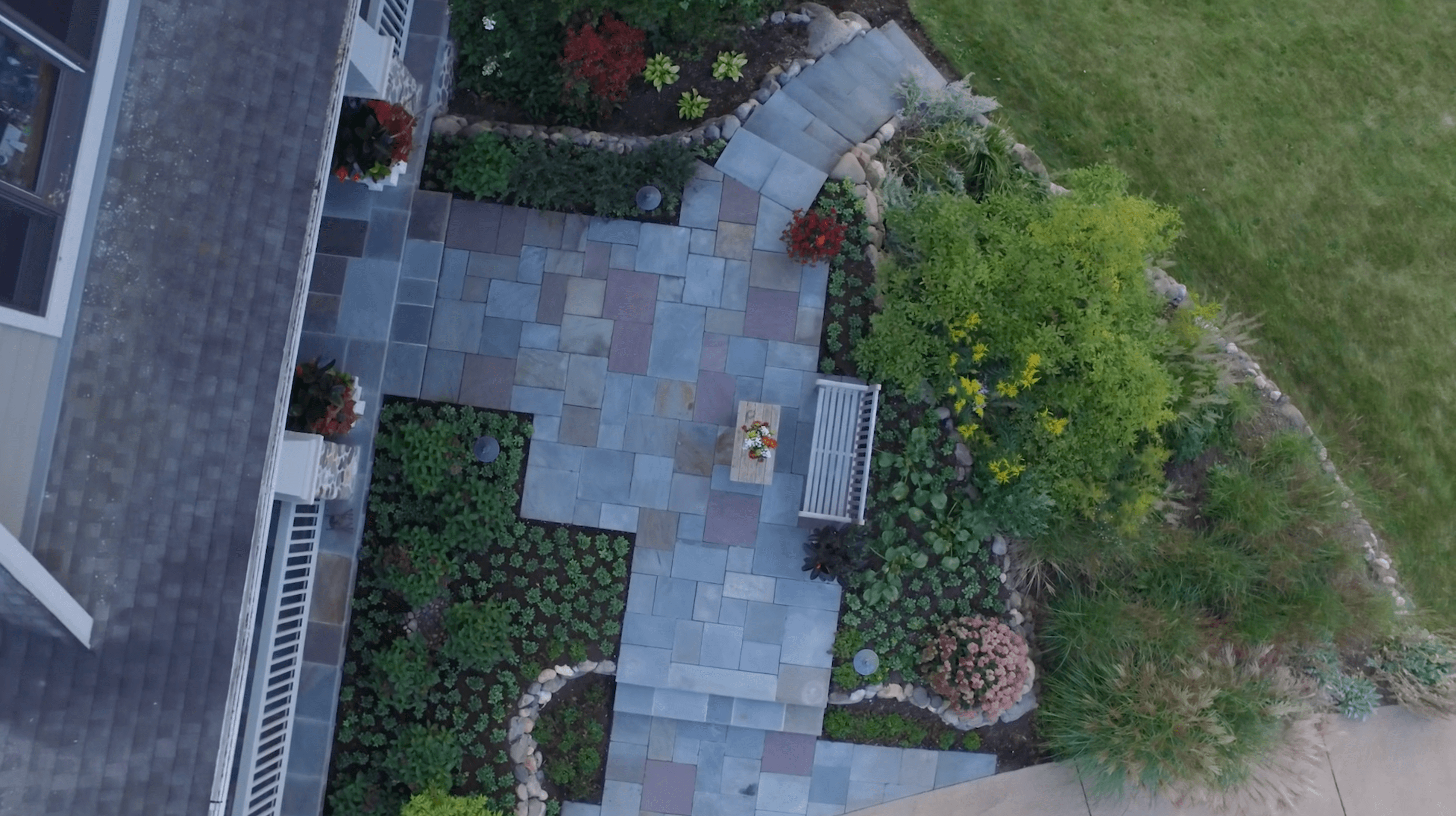Spring is many weeks away and the nights are still dark and cold.
Some homeowners look out their window in the evening and all they see is their reflection. That’s a shame because a landscape should be one of the loveliest and most distinctive features of a home. But for many, it’s often hidden from view once the sun sets in winter.
The trees and shrubs are dormant now, but there’s no reason your garden can’t be stunning and magical at this time of year, especially at night. A carefully designed landscape features lighting that keeps a garden alive in winter, so it can be enjoyed from indoors as well as from the street.
Let There Be Light
When we design a landscape, it doesn’t stop with the plants, paths, patio, water features or driveway. We’re landscape architects and thus we think big picture. Outdoor lighting is a key element in our designs that allows clients to enjoy their gardens all year long.
For example, a light strategically placed in the canopy of a large shade tree casts a web of delicate shadows from the bare branches in winter. When lit from below, a crab apple, Japanese tree lilac, redbud or other small ornamental tree creates a dramatic display that doesn’t require blossoms or berries for good looks. And, lighting the steps or sidewalk to your entryway is not only practical but also pleasing.
We may highlight an object or surface with a single spotlight from above or with several small lights placed high up, which we call “downlighting.” When we place a light high above the ground to simulate a soft, diffuse glow from a treetop, we’re using “moonlighting.” And, when we light an object from below to create a silhouette, we’re using “uplighting.”
Professionally designed and installed, lighting does much more than create drama. Rope lighting is another way that gazebos, arbors, handrails and banisters can be emphasized at night, which is a wonderful feature when you’re entertaining in the summer. You may not see the direct source of light, but instead, it’s just a soft romantic glow. Lighting is the icing on the cake for a well-designed landscape.
Landscape Features
During the day, a statue or fountain can be a fascinating focal point, but at night we may light that element for a very different, dramatic effect. Why not enjoy those landscape elements in the evening? We place lights in water features from ponds to water falls, which brings an element of mystery. And, we position lights on a home’s facade to produce shadow effects and to highlight interesting architectural features.
For some projects, path lights are carefully placed to allow safe movement through the space. Along a path we may uplight trees and shrubs to define their shapes and make them pop in the darkness. One of our favorite techniques, moonlighting, creates a wonderful feeling after dark when we light big trees so that their trunks and branches create shadows and patterns across the lawn. Whether that lawn is snow-covered in winter or lush and green in July, the effect is stunning.
As landscape architects, lighting is never an afterthought. It’s part of the whole. Our aim is to create a soft, natural look. We may use area lighting for a deck or patio, accent lighting, such as wall sconces, and perimeter lighting around the yard so that when you’re entertaining on late summer nights, you’re not surrounded by darkness. The sun sets every day but that doesn’t mean your house and landscape must go into hiding.
Our tool box includes directional lights, bullet lights, flood lights, path lights, area lights, well lights and step lights. There are no one-size-fits-all lights for every project. Your landscape, like your home, should be distinctive. The style, color and material of the outdoor lights should complement and enhance the architecture of your home and your lifestyle.
For one very elegant property, we installed brass and copper LED lighting fixtures to enhance the strong formal landscape lines at night. We also submersed lighting into the fountain to create a special effect after dark. Landscaping is an important investment—we want our clients to make the most of their property not just in the summer when they may be entertaining or relaxing, but all year long.
Safety in Mind
Outdoor lighting increases the beauty factor of a landscape at night, but safety and security are also top of mind for us and for our clients. While a standard lamp post casts a cheery glow, that’s usually not enough to brighten a path or entryway. Then, there are driveways that have so many sidelights they look like an airport runway. You’ve no doubt seen overly bright properties with “unshielded” lights that produce a harsh glare. It doesn’t make for happy neighbors. We don’t do that. There’s a happy medium where the choice of lights and their placement provides the brightness you need without seeing a multitude of fixtures or annoying glare.
Each one of our landscape projects takes lighting into consideration from the beginning. That’s important because outdoor lights are subjected to heat and freezing temperatures, snow, hail, rain, and perhaps dogs, kids, soccer balls and sprinklers. Some homeowners try DIY lighting kits purchased at a big-box store, but the effects are simply not the same. If you’re not familiar with local building codes, electrical loads, plant material, low- and high-voltage systems, leave it to a professional.
Outdoor lighting makes your guests feel at home before they even step inside. There’s much more to it than just that lamp post out front. First impressions are everything. Make yours a bright one.


